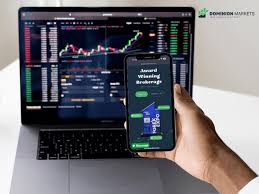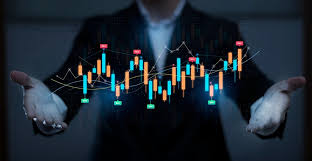
In the world of trading and investing, understanding the concept of maximum leverage is crucial for making informed decisions. Maximum leverage is a term used to describe the highest amount of borrowing a trader can use to increase their position in a market. For many, this aspect can significantly amplify potential returns, but it also carries substantial risks. Whether you are a novice trader or an experienced investor, grasping the implications of maximum leverage can help you navigate the complexities of the financial markets. Nonetheless, it is imperative to approach leveraging with caution, as the financial landscape can be unpredictable. Learn more about concepts related to leverage and trading on platforms like what is maximum leverage Minereum.
What is Leverage?
Before diving into maximum leverage, it’s essential to understand the general concept of leverage in finance. Leverage refers to the use of borrowed funds to increase the potential return on an investment. This strategy allows traders to control larger positions in the market without needing to commit the full capital upfront. In essence, leverage magnifies both profits and losses. For example, a trader with $1,000 capital wishing to leverage at a 10:1 ratio can control a position of $10,000. This capability is attractive, especially for those looking to maximize their trading opportunities.
Understanding Maximum Leverage
Maximum leverage is typically expressed as a ratio, such as 100:1 or 50:1, indicating how much a trader can borrow against their capital. Different financial instruments and exchanges offer varying levels of maximum leverage based on their risk appetite and regulatory environment. It’s essential to note that while lower leverage reduces risk, higher leverage allows for greater potential profit. However, the fine line between risk and reward makes maximum leverage a critical concept in trading.
The Mechanics of Maximum Leverage
When a trader opens a leveraged position, they only need to deposit a small percentage of the total trade value, known as the margin. For instance, in a 100:1 leverage scenario, a trader only needs to provide a 1% margin to open a $100,000 position, equating to a $1,000 investment. However, if the market moves against the trader, losses can quickly accumulate, leading to a margin call where the trader must deposit more funds to maintain their position.
The Benefits of Maximum Leverage
One of the primary advantages of utilizing maximum leverage is the opportunity for substantial returns on a relatively small investment. With the increasing accessibility of trading platforms that offer high leverage, more traders are capable of entering markets that may have previously seemed unattainable. It also enables traders to diversify their portfolios, as they can allocate more capital to different positions without requiring a proportional increase in initial investment.
Additionally, maximum leverage can provide liquidity in the market. High leverage can encourage more trading activity, contributing to price discovery and market efficiency.

The Risks of Maximum Leverage
Despite the benefits, maximum leverage poses significant risks that traders must consider. The ability to control larger positions can lead to amplified losses, which can occur within a short time frame. For example, if a trader utilizing 100:1 leverage experiences a 1% drop in the asset’s value, their entire investment has been wiped out. Such scenarios highlight the importance of risk management strategies, such as setting stop-loss orders and calculating position sizes based on leverage.
Regulatory Limits on Maximum Leverage
Various financial regulatory bodies impose limits on maximum leverage to protect traders from excessive risks. These limits can differ based on the instrument being traded, the type of broker, and the jurisdiction governing the trading activity. For instance, in the European Union, regulations might cap leverage for retail forex traders at 30:1 or lower, while the United States has similar restrictions for certain instruments. Understanding the regulatory environment is vital for traders to ensure compliance and mitigate risk.
How to Approach Maximum Leverage Wisely
To navigate the complexities of maximum leverage effectively, traders should adopt a disciplined approach.
- Education: Before considering using leverage, take time to learn about market dynamics and the specific instruments you intend to trade.
- Risk Management: Implement risk management techniques to protect your capital. This strategy could include position sizing, stop-loss orders, and limiting leverage usage.
- Start Small: Consider initiating trades with lower leverage to acclimatize to market fluctuations. Gradually increase your exposure as you gain more experience.
- Stay Informed: Keep up with market trends and news that can impact your trades. Being informed can help make more strategic decisions.
Conclusion
In conclusion, understanding maximum leverage is critical for anyone interested in trading and investing. While the potential for amplified returns is enticing, the associated risks cannot be overlooked. By grasping the mechanics of leverage, recognizing regulatory limits, and implementing sound risk management strategies, traders can navigate the complexities of the market more effectively. As with any financial endeavor, knowledge and preparation are key to success in leveraging trading strategies.
